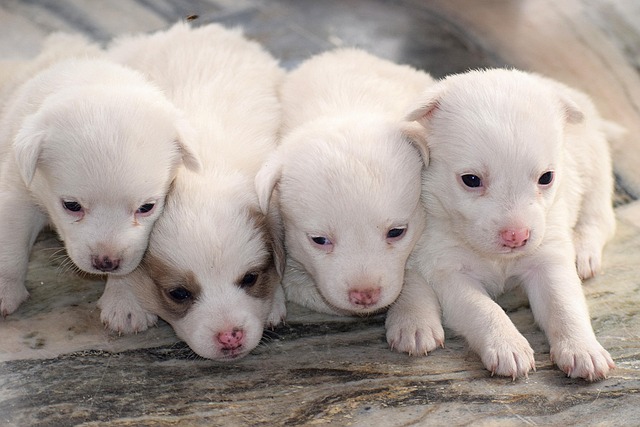
How do i train my dog to be obedient?
Watching your dog dart across the park ignoring your calls isn’t just frustrating—it can put them at risk near busy streets or public spaces.
Bringing home a new puppy is full of joy, but when the weather outside is less than ideal or you're spending more time indoors, keeping your furry friend engaged becomes essential. Puppies are curious bundles of energy, and keeping them entertained indoors isn't just about killing time—it's about nurturing their physical health, mental development, and emotional well-being. Let's explore some fun, practical, and safe ways to keep your puppy happy and active inside.
Start with interactive toys that challenge their minds. Puzzle feeders are a great choice—instead of just eating from a bowl, your puppy has to work to get their food. These toys come in various designs, from simple mazes to more complex puzzles, and they keep your puppy occupied while satisfying their natural foraging instincts. Just make sure any toys you choose are sturdy and safe, without small parts that could be chewed off and swallowed, adhering to the safety standards that ensure your puppy's playtime is risk-free.
Another excellent way to entertain your puppy indoors is through interactive games you can play together. Fetch is a classic, but you can adapt it for indoor spaces by using a soft toy and keeping the game gentle to avoid damaging furniture. Tug-of-war is another option, but remember to establish rules early—let your puppy win occasionally to keep it fun, and always use a proper tug toy designed for dogs. These games not only provide physical exercise but also strengthen the bond between you and your puppy, creating moments of shared joy.
 Creating a stimulating environment can make a big difference too. Set up a puppy obstacle course using household items like pillows, chairs, and tunnels (you can even use a cardboard box, as long as it's safe and supervised). Guide your puppy through the course, encouraging them with treats and praise. Changing the layout regularly keeps the environment fresh and exciting, satisfying their need for new experiences. It's a playful way to keep them active and engaged, while also helping them develop coordination and confidence.
Creating a stimulating environment can make a big difference too. Set up a puppy obstacle course using household items like pillows, chairs, and tunnels (you can even use a cardboard box, as long as it's safe and supervised). Guide your puppy through the course, encouraging them with treats and praise. Changing the layout regularly keeps the environment fresh and exciting, satisfying their need for new experiences. It's a playful way to keep them active and engaged, while also helping them develop coordination and confidence.
Don't underestimate the power of training sessions as a form of entertainment. Puppies are eager to learn, and short training sessions for basic commands like "sit," "stay," and "come" are not only educational but also mentally tiring. Use positive reinforcement with treats and lots of affection to make the sessions enjoyable. Training not only entertains your puppy but also helps establish good behavior habits, contributing to a well-rounded and well-behaved dog as they grow. It's a win-win for both of you.
Incorporating chew toys into your puppy's indoor routine is crucial, too. Teething puppies have a natural urge to chew, and providing appropriate chew toys can satisfy that need while protecting your furniture. Look for toys made from safe, durable materials that are suitable for their age and size. Chewing helps keep their teeth clean and healthy, and it gives them something to focus on when they might otherwise get into mischief. Just be sure to monitor them during chew time to ensure they're using the toys safely.
Finally, don't forget the importance of simply spending time with your puppy. Cuddling, petting, and talking to them provides the emotional comfort they need. Puppies are social animals and thrive on human interaction. Even if you're just relaxing together, your presence helps them feel secure and loved. It's a simple yet effective way to keep them entertained and content, reinforcing the strong bond you're building.
By combining interactive toys, engaging games, stimulating environments, training sessions, appropriate chew toys, and plenty of quality time, you can create a rich and enjoyable indoor life for your puppy. Remember, a entertained puppy is a happy and healthy puppy, and these activities not only meet their needs but also make your time together more fulfilling. So, get creative, have fun, and watch your puppy thrive even when staying indoors.

Watching your dog dart across the park ignoring your calls isn’t just frustrating—it can put them at risk near busy streets or public spaces.

New puppy owners often find themselves rushing to clean up accidents before they set in, and that’s where puppy pad training becomes a game-changer.

If you've noticed your dog's waistline disappearing and your veterinarian has mentioned those few extra pounds, your first instinct might be to simply reduce the amount of food in their bowl.

Training a dog to use a designated spot indoors isn’t as daunting as many new owners fear, but it does take consistency and an understanding of your pet’s needs.

That moment of dread on a walk is all too familiar for many new dog owners. You see another dog approaching down the sidewalk of your neighborhood

If the sight of another dog on your neighborhood walk makes your heart sink as your own dog erupts into a frenzy of barking and lunging, you're not alone.